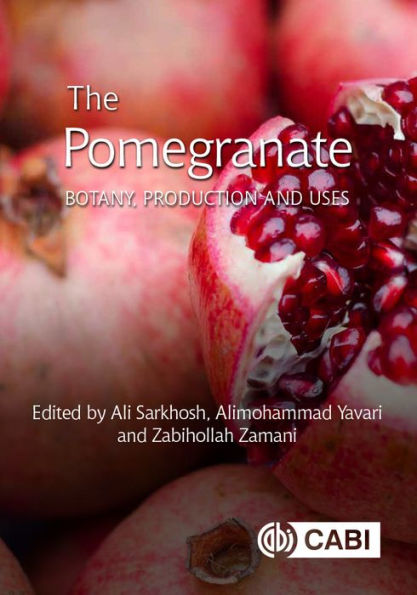The Pomegranate: Botany, Production and Uses
The pomegranate, Punica granatum L., is one of the oldest known edible fruits and is associated with the ancient civilizations of the Middle East. This is the first comprehensive book covering the botany, production, processing, health and industrial uses of the pomegranate. The cultivation of this fruit for fresh consumption, juice production and medicinal purposes has expanded more than tenfold over the past 20 years.
Presenting a review of pomegranate growing, from a scientific and horticultural perspective, this book provides information on how to increase yields and improve short- and medium-term grower profitability and sustainability. It covers:
"1137482311"
Presenting a review of pomegranate growing, from a scientific and horticultural perspective, this book provides information on how to increase yields and improve short- and medium-term grower profitability and sustainability. It covers:
- practices to mitigate pests, diseases and abiotic stresses;
- yield-based nutrition management;
- cultural practices for cultivars with horticultural traits such as earliness, high yield, improved taste, soft seeds, disease resistance, and low splitting and sunscald rates;
- increasing crop diversity to aid crop security; and
- composition, food uses and medicinal uses.
The Pomegranate: Botany, Production and Uses
The pomegranate, Punica granatum L., is one of the oldest known edible fruits and is associated with the ancient civilizations of the Middle East. This is the first comprehensive book covering the botany, production, processing, health and industrial uses of the pomegranate. The cultivation of this fruit for fresh consumption, juice production and medicinal purposes has expanded more than tenfold over the past 20 years.
Presenting a review of pomegranate growing, from a scientific and horticultural perspective, this book provides information on how to increase yields and improve short- and medium-term grower profitability and sustainability. It covers:
Presenting a review of pomegranate growing, from a scientific and horticultural perspective, this book provides information on how to increase yields and improve short- and medium-term grower profitability and sustainability. It covers:
- practices to mitigate pests, diseases and abiotic stresses;
- yield-based nutrition management;
- cultural practices for cultivars with horticultural traits such as earliness, high yield, improved taste, soft seeds, disease resistance, and low splitting and sunscald rates;
- increasing crop diversity to aid crop security; and
- composition, food uses and medicinal uses.
227.0
In Stock
5
1

The Pomegranate: Botany, Production and Uses
584
The Pomegranate: Botany, Production and Uses
584
227.0
In Stock

Product Details
| ISBN-13: | 9781789240764 |
|---|---|
| Publisher: | CABI |
| Publication date: | 12/14/2020 |
| Series: | Botany, Production and Uses |
| Pages: | 584 |
| Product dimensions: | 6.00(w) x 9.00(h) x (d) |
About the Author
From the B&N Reads Blog
